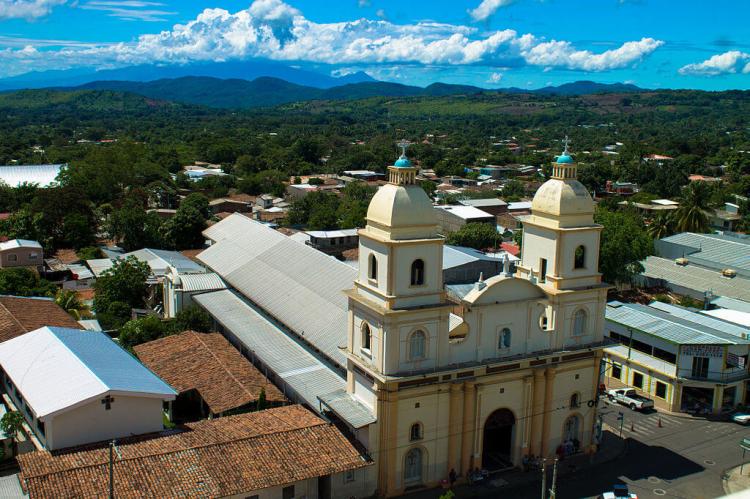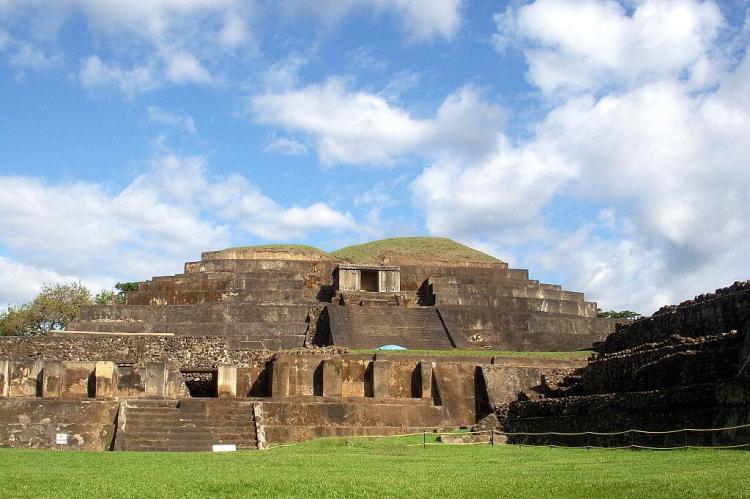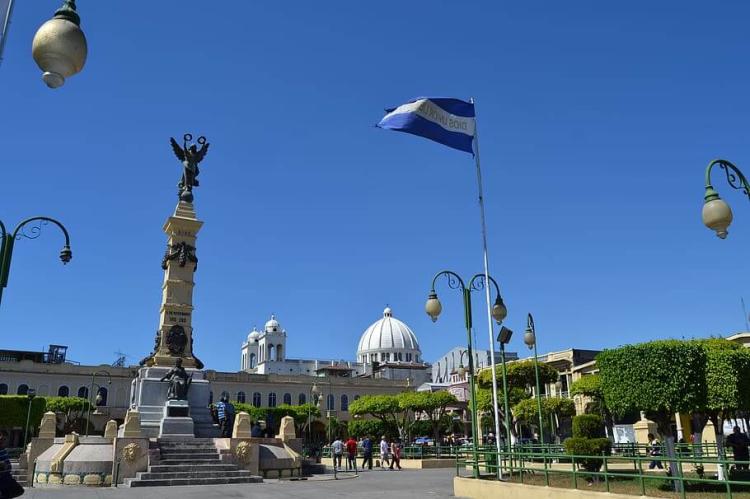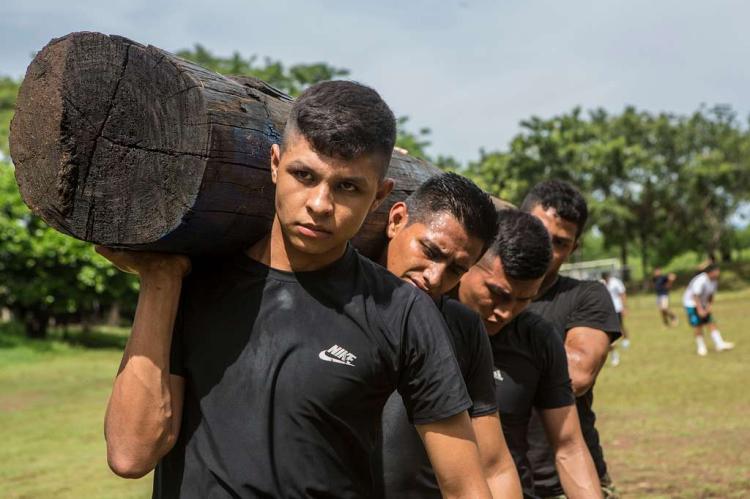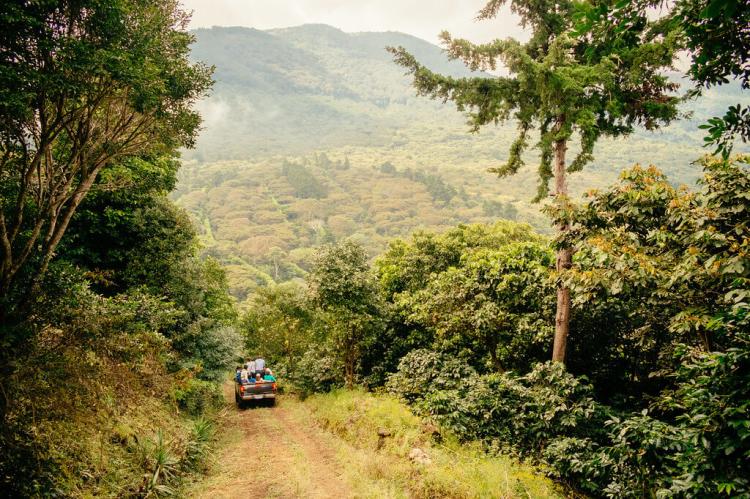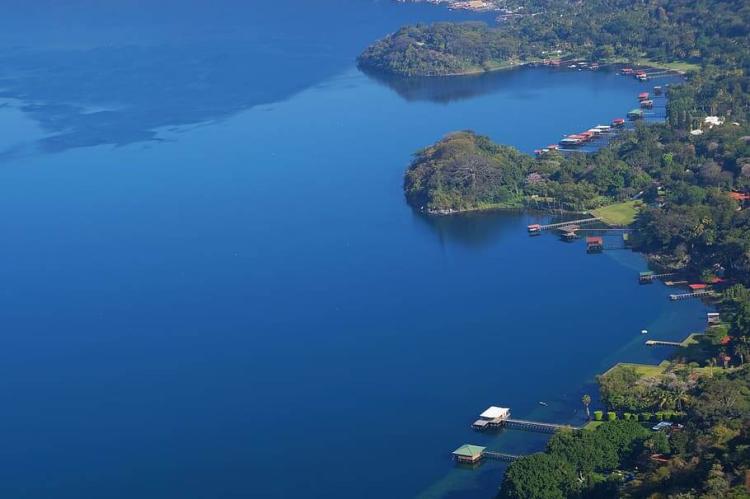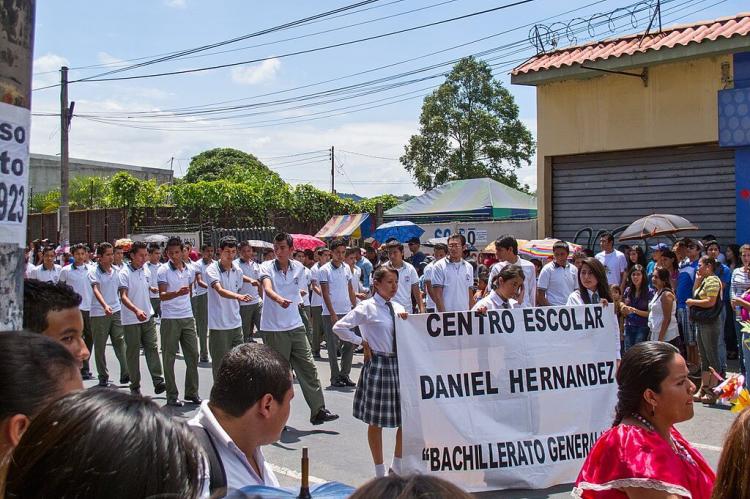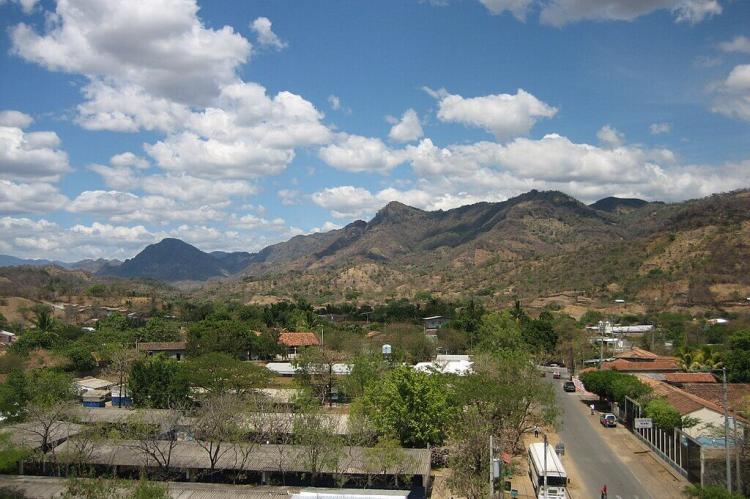El Salvador: Cultural Landscape
El Salvador's cultural landscape dynamically blends Indigenous, European, and contemporary influences. Shaped by the ancient Pipil civilization, Spanish colonization, and modern global trends, the country's cultural identity is a rich tapestry of traditions, customs, language, cuisine, and artistic expression.
The Cultural Landscape of El Salvador
El Salvador's cultural landscape is a vibrant and dynamic blend of Indigenous, European, and contemporary influences. Shaped by the ancient Pipil civilization, Spanish colonization, and modern global trends, the country's cultural identity is a rich tapestry of traditions, customs, language, cuisine, and artistic expression. Despite the challenges it faces, including political tensions and high levels of violence, El Salvador's cultural heritage remains resilient, evolving while preserving its essence.
Indigenous Heritage
A significant portion of El Salvador's population is of Mestizo descent, a mix of Indigenous and European heritage. However, Indigenous communities, particularly the Pipil people, still play a crucial role in preserving the nation's cultural roots. The Pipil, who trace their lineage to the Nahua people, have maintained ancient traditions, languages, and practices, particularly in rural areas. Their contributions are evident in traditional crafts such as pottery, weaving, and woodwork. Artisanal creations from these communities often reflect their connection to the land, mythology, and history, enriching the country's cultural diversity.
Colonial Influence
Spanish colonization in the 16th century introduced European customs and traditions that continue to shape Salvadoran society today. The Spanish language, Roman Catholicism, and European social structures became dominant after the arrival of the Spanish. However, El Salvador's cultural landscape is not solely defined by European influence; blending Indigenous and Spanish traditions created a distinct identity. Colonial architecture, such as churches and public buildings in towns across the country, showcases this fusion of styles. The intricate religious iconography and festivals are testaments to the lasting impact of Spanish colonization.
Arts and Literature
El Salvador boasts a rich legacy in both arts and literature. The country's writers, poets, and painters have significantly contributed to Latin American cultural movements. One of El Salvador's most renowned poets, Roque Dalton, used his works to explore themes of revolution, identity, and social justice themes. Claribel Alegría, a leading voice in Salvadoran literature, has also achieved international recognition for her poetry and prose. The visual arts have similarly flourished, with painters such as Francisco Gavidia and Benjamin Valdivia contributing to a growing artistic tradition that reflects the complexities of Salvadoran life and identity.
Folklore and Festivals
El Salvador's folklore and festivals are essential to the country's cultural fabric, reflecting a mixture of Indigenous, Spanish, and religious influences. One of the most celebrated events is the "Fiestas Agostinas," held in early August in honor of El Salvador's patron saint, the Divine Savior of the World. During this vibrant festival, the streets of San Salvador come alive with parades, traditional dances, music, and fireworks. Another significant cultural event is the "Día de la Cruz" (Day of the Cross), celebrated on May 3, blending Catholic symbolism with Indigenous practices tied to nature and agriculture.
Culinary Traditions
Salvadoran cuisine reflects the country's blend of Indigenous and Spanish influences, emphasizing locally sourced ingredients. Pupusas, El Salvador's national dish, are thick corn tortillas filled with cheese, beans, and pork, served with pickled cabbage (curtido) and tomato sauce. Other traditional dishes include yuca con chicharrón (cassava with fried pork) and sopa de pata (cow foot soup), reflecting the rural roots of Salvadoran gastronomy. Coffee is also a central element of Salvadoran culture, with the country's high-altitude regions producing some of the finest Arabica beans enjoyed domestically and internationally.
Music and Dance
Music and dance are vital expressions of Salvadoran culture, with various genres reflecting the country's diverse influences. Traditional folk music, such as marimba and chanchona, is performed at festivals and family gatherings. Modern genres like cumbia and salsa are popular, reflecting a broader Latin American cultural influence. Folk dances, such as the "Danza de las Flores" (Dance of the Flowers) and "Danza de los Moros y Cristianos" (Dance of the Moors and Christians), are often performed during festivals, showcasing the country's historical and religious traditions.
Indigenous and Natural Heritage
El Salvador's cultural identity is deeply intertwined with its natural environment. The country is home to ancient archaeological sites such as Joya de Cerén, a UNESCO World Heritage Site, which provides valuable insights into pre-Columbian civilizations. Tazumal, another significant archaeological site, features impressive pyramids and artifacts from El Salvador's ancient cultures. These cultural treasures are set against a backdrop of stunning natural landscapes, from volcanoes and mountains to Pacific beaches, which also play a central role in Salvadoran identity.
Contemporary Influences on Salvadoran Culture
Globalization
Globalization has brought both opportunities and challenges to El Salvador's cultural landscape. Increased exposure to foreign cultures through media, travel, and migration has led to a blending of Salvadoran traditions with global trends. However, this exposure also risks diluting traditional customs, particularly among younger generations. Modern Salvadorans navigate a cultural balance, integrating elements of global culture while maintaining a connection to their heritage.
Technology and Modernization
The rise of technology has significantly impacted Salvadoran culture. Social media and digital communication reshape how Salvadorans interact, express themselves, and engage with the world. Younger generations, particularly, embrace global pop culture while using technology to promote and preserve traditional arts and crafts. Increased access to information and new forms of entertainment is changing how Salvadorans live, but it also fosters creativity and cultural exchange.
Migration and Its Impact
Migration, especially to the United States, has played a pivotal role in shaping modern Salvadoran culture. The remittances sent back by migrants are vital to the country's economy, but the cultural exchange between Salvadorans abroad and those at home has also influenced local customs. Festivals, music, and even culinary traditions have evolved to reflect the cross-cultural experiences of Salvadorans living in diaspora communities.
Political Climate and Crime
The political climate in El Salvador is currently defined by President Nayib Bukele's administration, which has adopted an aggressive approach to combat gang violence, one of the country's most pressing issues. El Salvador has historically struggled with high rates of crime and violence, primarily driven by gang activity and organized crime. In response, the government has implemented measures such as mass arrests and strict anti-gang laws, leading to a significant reduction in crime rates.
While these efforts have increased security and stability in certain areas, they have also sparked debates about human rights and the balance between security and individual freedoms. The government's strategies have affected daily life, with some communities seeing a revival in public spaces and cultural activities. The reduction in violence has allowed greater freedom for people to participate in festivals, concerts, and other cultural events.
At the same time, El Salvador's political landscape remains polarized, with concerns over the concentration of power and the long-term impact of the government's crime-fighting methods. Nonetheless, the country's efforts to reduce violence are reshaping the cultural and social environment, creating new possibilities for the revival and preservation of Salvadoran traditions.
Challenges Facing Salvadoran Culture
Violence and Crime
El Salvador has one of the highest rates of violence in the world, primarily due to gang activity and organized crime. This violence has had a profound impact on the country's social fabric, limiting opportunities for cultural development and public life in some areas. Despite these challenges, Salvadorans continue to find ways to express their cultural identity through community-building efforts and grassroots initiatives aimed at reducing violence.
Poverty and Inequality
Poverty remains a significant challenge in El Salvador, with nearly one-third of the population living below the poverty line. Economic hardship limits access to education, healthcare, and cultural opportunities, creating a disparity between urban and rural communities. Many Salvadorans rely on traditional crafts and agriculture for their livelihoods, making preserving cultural heritage an important means of sustaining their communities.
Globalization and Cultural Preservation
As Salvadorans engage more with the global economy and culture, the challenge of preserving traditional customs becomes more pronounced. The influence of foreign media and consumer culture can sometimes erode local traditions, particularly among the younger generation. However, efforts to preserve Salvadoran culture through education, festivals, and arts programs are ongoing, emphasizing maintaining a strong connection to the country's rich Indigenous and colonial heritage.
Conclusion
El Salvador's cultural landscape is a dynamic fusion of ancient traditions, colonial history, and contemporary influences. From its Indigenous roots to the impact of Spanish colonization and modern political efforts to combat violence, El Salvador has developed a unique cultural identity that continues to evolve. Whether through its music, festivals, arts, or culinary traditions, the spirit of El Salvador remains resilient as the country strives to preserve its heritage while embracing future opportunities.
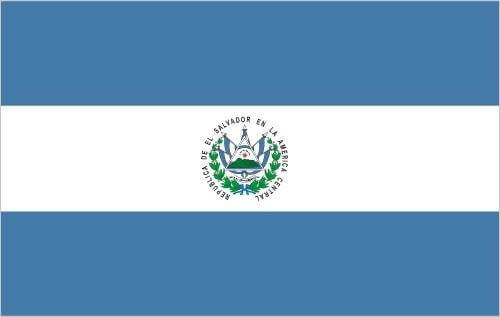
The official flag of El Salvador.
Cultural Geography of El Salvador
Largest Cities / Metro Areas
Ranked by population estimate (2020):
San Salvador* (526,000): San Salvador is the capital and largest city of El Salvador. It is located in the central part of the country, in the San Salvador Department. San Salvador is a major commercial, financial, and industrial center. It is also a popular tourist destination known for its colonial architecture, museums, and lively nightlife.
Soyapango (330,000): Soyapango is a city in the San Salvador Department of El Salvador. Soyapango is a commercial center and a central industrial hub. The city is also home to several universities and colleges. Soyapango is a vibrant and diverse city with a rich culture and history.
Santa Ana (280,000): Santa Ana is located in the western part of the country, in the Santa Ana Department. The city is known for its colonial architecture, the coffee industry, and vibrant culture.
San Miguel (247,000): San Miguel is located in the eastern part of the country, in the San Miguel Department. The city is a commercial and industrial center and a popular tourist destination known for its colonial architecture, museums, and lively nightlife.
Apopa (218,000): Apopa is a city in the San Salvador Department of El Salvador located about 12 km (7.5 mi) north of the capital. It is a major industrial center and home to many factories that produce textiles, furniture, and other goods. The city is also a popular tourist destination, with several attractions, including the Apopa Zoo, the Apopa Pyramid, and the Apopa Market.
Mejicanos (212,000): Mejicanos is a city in the San Salvador Department of El Salvador. It is a San Salvador suburb located just north of the capital city. The city is known for its colonial architecture, vibrant culture, and delicious food.
Santa Tecla (164,000): Santa Tecla is a city in the La Libertad Department of El Salvador. It is a commercial and industrial center and a popular tourist destination known for its colonial architecture, museums, and lively nightlife.
Ilopango (159,000): Ilopango is a city in the San Salvador Department of El Salvador, located about 10 km (6 mi) east of the capital. It is a major industrial center and home to many factories that produce textiles, furniture, and other goods. The city is also a popular tourist destination, with several attractions, including the Ilopango Lake, the Ilopango Volcano, and the Ilopango Market.
Sonsonate (111,000): Sonsonate is a city in western El Salvador, located on the Sensunapan River and the Pan-American Highway from San Salvador to the Pacific port of Acajutla, 21 km (13 mi) south. It is the capital of the Sonsonate Department and a popular tourist destination known for its colonial architecture, beaches, and coffee plantations.
San Martín (145,000): San Martín is a municipality in the San Salvador Department of El Salvador. It is about 15 km (9 mi) east of the capital. The city is known for its coffee plantations, traditional handicrafts, and vibrant culture.
*The Metropolitan Area of San Salvador, which includes the surrounding municipalities of Apopa, Cuscatancingo, Ilopango, Mejicanos, San Marcos, and Soyapango, has over 2.2 million people, making it the most populous metropolitan area in Central America.

Map of El Salvador.
Administrative Divisions
El Salvador has 14 departments, each administered by a governor appointed by the president. Each department has a capital city, and the 14 departments are subdivided into 262 municipalities.
Departments
The departments of El Salvador, their capitals, and a brief description are as follows:
Ahuachapán (Capital: Ahuachapán): Ahuachapán is known for its coffee production and beautiful landscapes. It features volcanic hot springs and picturesque towns, making it a popular destination for relaxation and ecotourism.
Cabañas (Capital: Sensuntepeque): Cabañas is located in the northern part of the country and is characterized by its agricultural activities. It offers opportunities for exploring rural life and natural attractions.
Chalatenango (Capital: Chalatenango): Chalatenango is known for its rugged terrain and mountainous landscapes. The department's highlands are rich in biodiversity and offer hiking and nature exploration opportunities.
Cuscatlán (Capital: Cojutepeque): Cuscatlán is a central department comprising urban and rural areas. Its capital, Cojutepeque, features a colonial-era church and serves as a center for commerce.
La Libertad (Capital: Santa Tecla): La Libertad is located along the Pacific coast and is known for its beaches and surfing. Santa Tecla is a city that offers modern amenities and access to the capital city, San Salvador.
La Paz (Capital: Zacatecoluca): La Paz is known for its agricultural production and rural landscapes. The department's capital, Zacatecoluca, hosts a colorful market and historical sites.
La Unión (Capital: La Unión): La Unión is situated in the eastern part of the country and features coastal areas and mangroves. The department's capital, La Unión, is a port city with access to the Gulf of Fonseca.
Morazán (Capital: San Francisco Gotera): Morazán is known for its historical significance and natural beauty. The department's landscapes range from mountains to rivers, making it a destination for ecotourism.
San Miguel (Capital: San Miguel): San Miguel is the third-largest city in El Salvador and serves as a commercial and cultural center. The department offers a blend of urban amenities and nearby natural attractions.
San Salvador (Capital: San Salvador): San Salvador is the capital department and houses the country's political, economic, and cultural center. The capital city is vibrant and diverse, featuring historical sites, museums, and modern infrastructure.
San Vicente (Capital: San Vicente): San Vicente is known for its agricultural activities, including sugar cane and dairy farming. The department's capital, San Vicente, features a central park and a historic church.
Santa Ana (Capital: Santa Ana): Santa Ana is the second-largest city in El Salvador, surrounded by volcanic landscapes. The city offers colonial architecture, a lively market, and access to nearby natural attractions.
Sonsonate (Capital: Sonsonate): Sonsonate is known for its coffee production and agricultural landscapes. The department's capital, Sonsonate, features a cathedral and a bustling market.
Usulután (Capital: Usulután): Usulután is situated along the southeastern coast and offers a mix of beaches and rural areas. The department's capital, Usulután, features historical architecture and access to the coast.
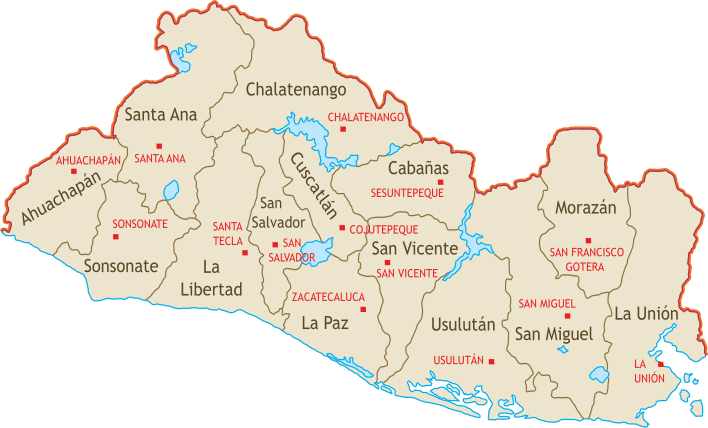
Map depicting the administrative departments of El Salvador and their capitals.
Geographic Regions (Zones)
El Salvador's unique topography divides the country into three distinct geographic regions:
Pacific Plains: Located along the coastline at sea level, this is the lowest region of the country.
Central Plateau: Situated at approximately 2,000 feet above sea level, this region represents 25% of the total land area but contains the heaviest population concentration and largest cities. It is characterized by rolling terrain with occasional escarpments, lava fields, and geysers.
Northern Highlands: Located in the northern part of the country, these highlands rise more than 900 m (3,000 ft above sea level. This region is part of the Sierra Madre mountain range along the border with Honduras and is the most sparsely populated zone due to extensive erosion and limited agricultural potential.
See more: Natural Landscape of El Salvador
Historical, Cultural, and Natural Landmarks of El Salvador by Region
El Salvador's rich diversity is reflected in its landmarks, which span the Pacific Coastal Plain, Central Plateau, and Northern Highlands. Each region offers a blend of historical, cultural, and natural attractions, showcasing the country's vibrant heritage and stunning landscapes.
Pacific Coastal Plain
Stunning beaches, rich marine biodiversity, and lively coastal towns characterize this region.
El Tunco: Famed for its vibrant surf scene, El Tunco is a hub for surfers and beachgoers alike. Its beachfront restaurants, cozy accommodations, and nightlife create a laid-back yet energetic coastal atmosphere.
El Sunzal: Adjacent to El Tunco, El Sunzal is another top surf destination known for its consistent waves. It welcomes both beginner and experienced surfers and offers beachfront dining and surf schools.
Los Cóbanos: Renowned for its coral reefs and diverse marine life, Los Cóbanos is a hotspot for snorkeling and scuba diving. As a protected area, it ensures the conservation of its delicate ecosystem while providing unparalleled underwater exploration opportunities.
Costa del Sol: This luxurious resort area is known for its sandy beaches, water sports, and upscale accommodations. It is a popular destination for those seeking relaxation and adventure along El Salvador's coastline.
La Libertad: A bustling port city, La Libertad is the gateway to many of the Pacific Coastal Plain's beaches. Its lively fish market offers fresh seafood and a glimpse into local culture, while nearby beaches cater to surfers and vacationers.
Barra de Santiago: This estuarine paradise is home to mangroves, wetlands, and diverse bird species. Boat tours and birdwatching are popular activities in this protected area, featuring tranquil scenery and wildlife habitats.
Playa El Cuco: A serene beach destination backed by coconut palms and offering sweeping Pacific views, Playa El Cuco is ideal for unwinding or enjoying water activities in a peaceful environment.
La Barra de Santiago Natural Reserve: Situated at the mouth of the Lempa River, this reserve is a haven for birdwatchers and nature enthusiasts. It features mangrove forests, migratory bird habitats, and boat tours that showcase the area's biodiversity.
Central Plateau
The Central Plateau is home to volcanic landscapes, colonial towns, and archaeological wonders.
Joya de Cerén Archaeological Site: This UNESCO World Heritage Site, often called the "Pompeii of the Americas," provides a unique glimpse into the everyday life of the ancient Maya. Well-preserved homes, fields, and artifacts are buried under volcanic ash.
Santa Ana Volcano (Ilamatepec): The highest volcano in El Salvador, Santa Ana, offers a challenging hike to a turquoise crater lake and panoramic views of the surrounding landscapes. It is a must-visit natural landmark.
Los Volcanes National Park: This park encompasses three volcanoes—Santa Ana, Izalco, and Cerro Verde—and features lush cloud forests and breathtaking vistas, including views of Lake Coatepeque. Its trails provide access to volcanic landscapes and rich biodiversity.
Lake Coatepeque: This volcanic crater lake is surrounded by lush hills, offering opportunities for boating, swimming, and enjoying serene sunsets. It is a favored spot for relaxation and water sports.
Ruta de las Flores: This scenic route winds through picturesque towns such as Juayúa, Apaneca, and Ataco, known for vibrant murals, coffee plantations, flower gardens, and cultural festivals. Visitors can enjoy art, local cuisine, and colorful landscapes.
Suchitoto: A charming colonial town near Lake Suchitlán, Suchitoto is known for its cobblestone streets, colonial architecture, and cultural heritage. It features art galleries, festivals, and traditional cuisine while serving as a gateway to the Cinquera Ecological Park.
Lake Suchitlán: As El Salvador's largest lake, this hydroelectric reservoir is ideal for birdwatching, fishing, and boating. The surrounding wetlands provide habitats for diverse bird species, making it a paradise for nature lovers.
Tazumal Archaeological Site: Located in Chalchuapa, Tazumal features a well-preserved stepped pyramid and other structures that highlight the architectural achievements of the ancient Maya civilization.
El Boquerón National Park: This park is situated on the slopes of the San Salvador Volcano. It offers hiking trails leading to the crater's edge, from which visitors can enjoy panoramic views of the capital city and surrounding landscapes.
Northern Highlands
The cooler, mountainous region of the Northern Highlands offers pristine nature, historical sites, and breathtaking views.
Cerro El Pital: As El Salvador's highest point, Cerro El Pital is known for its cool weather, lush forests, and panoramic vistas. It is a popular destination for hiking and relaxation.
Montecristo Trifinio Forest Reserve: This cloud forest reserve, located in the tri-border area with Guatemala and Honduras, is home to rare orchids, endemic species, and diverse wildlife. It is a haven for nature enthusiasts and birdwatchers.
Chalatenango: Known for its rolling hills, coffee plantations, and picturesque villages, Chalatenango offers visitors opportunities to explore colonial churches, local markets, and scenic trails.
Cinquera Ecological Park: Located within the Apaneca-Ilamatepec Biosphere Reserve, this park is a model for community-led ecotourism. Visitors can hike, birdwatch, and swim in natural pools while learning about conservation efforts.
Cihuatan Archaeological Site: This ancient post-Mayan city features pyramids and ball courts, providing insights into pre-Columbian civilizations and their cultural practices.
